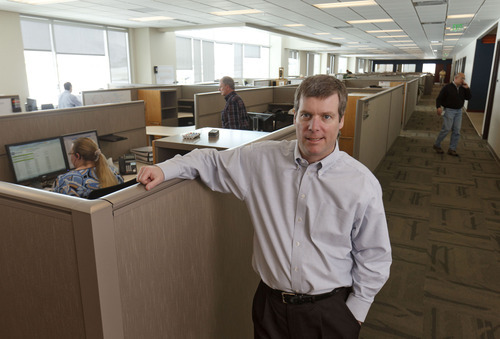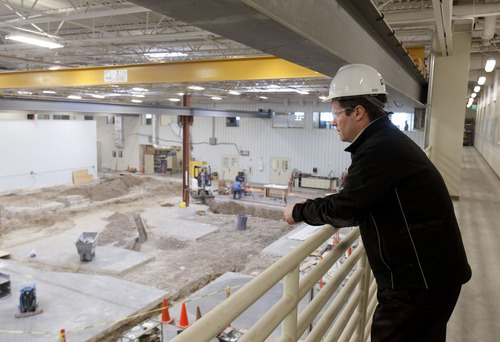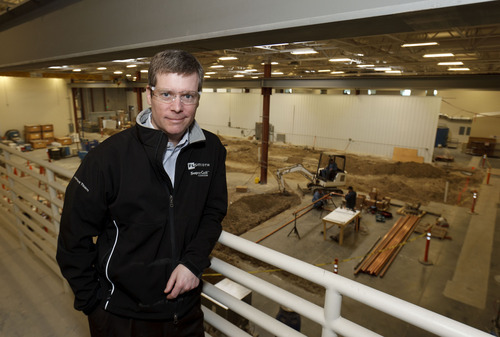This is an archived article that was published on sltrib.com in 2012, and information in the article may be outdated. It is provided only for personal research purposes and may not be reprinted.
Utah's unemployment rate in January dropped under 6 percent for the first time in three years, and job growth ticked up a notch, the Department of Workforce Services said Friday.
Statewide, the jobless rate fell to 5.7 percent from December's reading of 6 percent, helped by growth in all but one industrial sector. The unemployment rate has now fallen five consecutive months from its 2011 high of 7.6 percent in August.
The job count for January was up 2.6 percent from the same month of last year, for a 12-month increase of 30,300 jobs. Wage and salary employment stands at close to 1.21 million.
The pace of job growth rose slightly from December, when the number of jobs created in Utah was 2.5 percent higher than in December 2010. Last month's figure was revised down from 3 percent by the U.S. Bureau of Labor Statistics, said Workforce Services chief economist Mark Knold.
Nationally, the U.S. unemployment rate stood at 8.3 percent in January. Employment growth in January was 1.5 percent higher than in the same month of 2011.
All sectors of Utah's economy added jobs in January, with the exception of leisure and hospitality. That sector shed 900 jobs, mainly because of lean snowfall amounts at the state's ski resorts this year.
By contrast, the professional and business services sector added 6,700 jobs in the 12 months ending Jan. 31.
"We are obviously in a recovery mode. There's still a long way to go, but I feel comfortable with the strength of this recovery," Knold said.
He added that the U.S. economy also appears back on track. Any dangers that could throttle more growth appear to lurk outside the country — Israel might bomb Iran, which would send rising gasoline prices sky-high. Europe's debt crisis, which appears to be under control, might flare up again. Or the real estate bubble in China might collapse.
"The point of it all is it's outside-of-the-system shock [that might end the U.S. and Utah economic momentum], not something that we might do in-house," Knold said.
Utah's unemployment rate is at its lowest point since January 2009, when it was 5.8 percent and rising. Job growth was stopped in its tracks. That month, the number of jobs in the state was 3.3 percent lower than a year earlier. By midsummer, when the slide ended, the year-over-year loss of jobs had widened to 6 percent. It would take another year before wage and salary employment numbers turned positive again — and a second year before the rate of job growth cracked 2 percent. January's 2.6 percent rate is still below long-term averages, held back by weak demand for new homes. Knold said it won't move much higher until housing recovers.
Yet there is reason for optimism. Ten of 11 industrial sectors tracked by the Department of Workforce Services added jobs in January, including hard-pressed construction. It put 3,000 people to work in the year ending Jan. 31. The professional and business category put on the most jobs, while natural resources grew fastest, at 9.3 percent.
FLSmidth (pronounced F.L. Smit), a global supplier of equipment and services to the minerals and cement industries, added 200 employees last year to its Salt Lake City-based non-ferrous minerals division, bringing its Utah payroll to 610. The division plans to hire another 150 in 2012, said Peter Flanagan, executive vice president of the division. Most of the hires will be engineers, lawyers, accountants, general managers and laboratory scientists, he said.
"FLSmidth decided that Salt Lake City would be the technical center for the world for its minerals processing technology," Flanagan said. "The world is now our market. There is incredible demand around the world for what we do with the global miners."
The company moved into two new buildings in Midvale in September 2010. At the time, the office space seemed too large; today the company has outgrown its space and expects to start construction on a third building next month.
Growth is being fueled by new services and machines that FLSmidth is selling to the mining industry. The company is also selling into new markets, including China and India, which have large appetites for copper, iron and other metals that FLSmidth machinery can process, Flanagan said.
"It's a perfect storm of these three things converging, and Salt Lake City is really at the epicenter of that," he said.
Twitter: @sltribpaul









